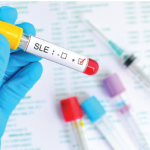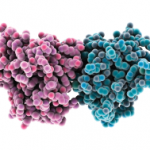
Dr. Barton
Gregory Barton, PhD, professor of immunology and pathogenesis, University of California, Berkeley, talked about research on the innate immune system and a key protein involved in the trafficking of a subset of toll-like receptors (TLRs) during FOCIS 2015 in San Diego.
To keep the body healthy, the immune system responds constantly to foreign cellular invaders that can be harmful if permitted to proliferate. How it recognizes the difference between unwanted alien cells and those that belong in the body is central to the paradigm of immunological self and non-self discrimination, Dr. Barton noted.
This concept applies to a subset of TLRs, transmembrane proteins that interact with the immune system and can discriminate among various forms of nucleic acid. Intracellular localization of these receptors to endosomal compartments is critical for TLRs to identify the origin of nucleic acid. Simply put, when TLRs recognize molecules associated with invading pathogens, they activate an immune response. Failure to detect the good from bad—self from non-self—could lead to autoimmunity.
Scientists have grappled with the complexity of the relationship between receptors and the “very heterogeneous” compartments they populate, Dr. Barton said. They are trying to better understand how different inputs are interpreted by various receptors and delivered to TLRs that broadcast the context in which the nucleic acid is being delivered.
Researchers at Dr. Barton’s lab studied how TLRs populate compartments and what the regulatory pathways are that control their ability to access different sources of nucleic acids. Their work prompted them to investigate a multi-pass transmembrane protein, Unc93b1, which interacts with TLRs and facilitates their trafficking to endosomal compartments.
Chaperoned Activity
As a chaperone, Unc93b1 binds TLRs destined for endosomes and controls their movement and exit from the sorting network, called endoplasmic reticulum (ER), to continue to their final destinations. Research indicates that the trafficking routes appear to be distinct, depending on which TLR trafficking chaperone is involved.
“About half a dozen TLRs require this trafficking chaperone to reach their functional compartment, and they compete for Unc93b1 in the ER. This can determine the amount of receptors that ultimately reach the compartment from which it can signal,” he said.
This sort of competition has functional consequences, Dr. Barton said. To illustrate, he described a mouse study in which a single amino acid mutation was shown to favor trafficking of TLR7 over TLR9, which gave TLR7 more ability to exit the ER, at the expense of TLR9. This was important because of a study finding that generated mice that expressed the mutation had developed a lupus-like disease, he said.
“So that really changed the way we were thinking about this regulator from not just a protein that is controlling localization, but also that it can fundamentally set the threshold of these receptors,” said Dr. Barton. More importantly, he added, this idea could have major consequences for the study of self- and non-self-discrimination.
Researchers in Dr. Barton’s lab conducted an analysis of Unc93B mutants to identify regions necessary for functioning. They then used knockout mice that lacked the function of TLR 7, 9 and 3, but had TLR4 intact, to test for mutants that affect TLR. They found that Unc93B1 is ubiquitin. The overall analysis of Unc93b1 mutants revealed a surprisingly complex regulation of TLR trafficking and function, Dr. Barton said. It also showed that distinct regions of Unc93b1 mediate how individual TLRs and subsets are regulated.
In addition, the research found that ubiquitylation of Unc93b1 regulates Unc93b1/TLR localization and limits responses of endosomal TLRs. Dr. Barton said, “We think the modulation of this pathway may facilitate recognition of self-nucleic acids.”
Catherine Kolonko is a medical writer based in Oregon.

